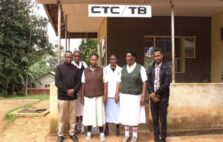In the Manyara region of Tanzania, helping ensure that Persons Living with HIV (PLHIV) continue to take their antiretroviral therapy (ART) is a labor of love. It is a continuous effort that has a myriad of factors to contend with for success to be met. Systemic issues, accessibility issues, and stigma are all implications of how PLHIV do or do not continue to take their ARTs.
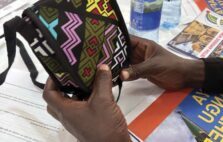
Recognizing these challenges, the USAID Afya Yangu (My Health) Northern (AYN) Project used Human Centered Design (HCD) to engage with a wide range of stakeholders to better understand their experiences around HIV care, both accessing care and providing it. After an in-depth co-creation process, the B-Ok kit emerged as a tool to facilitate the provision of care. The B-Ok helps guide Healthcare Providers (HCP) as they encourage PLHIV to comply with their ART regime.
The Importance of Explaining Viral Suppression
An issue that is consistent across HIV/AIDS related areas of care and treatment is the importance of viral suppression, especially with the establishment of undetectable levels of viral load rendering PLWHA as no longer infectious to others. However, this science has not yet been translated for use by everyday people. Never more so than the areas that the AYN Project works where socio-economic conditions are barriers to uptake and low levels of education can hinder understanding of complicated medical terminology. Yet the importance of communicating this to PLWHA remains paramount and an ongoing priority for social and behavior change communication (SBCC).
Providing a clear, science-based explanation of how viral suppression can be achieved is essential for outcomes but using scientific language has had poor outcomes, particularly with clients with reduced education levels or across language barriers. The Ministry of Health and NASHCoP have been mandated for two years to introduce U=U (Undetectable = Untransmittable) explanations into healthcare but struggle to achieve this with the social barriers that exist.
The Dareda Hospital Babati DC, which serves which serves young people, PLHIV and there families, is one of the healthcare facilities deploying the B-OK Kit in their attempt to encourage PLHIVʼs adherence antiretroviral therapy (ART). At Dareda Hospital, HCP along with a team of dedicated Community Healthcare Workers (CHWs)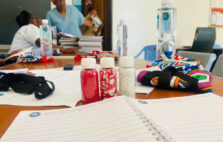 work together to keep their community healthy.
work together to keep their community healthy.
HCPs (including Community Healthcare Workers) appreciate the B-OK Kit’s guidance for both providers and clients as it helps facilitate better communication between them and their clients. This helps promote an understanding of why getting your ART prescription refilled is essential to remaining healthy.
Home Delivery
As HCPs adapt to client requests, especially for home delivery of ARTs by CHWs, the B-OK Kit acts as a new tool in their arsenal which they use to help promote quality service delivery to their clients.
“I love my job, I enjoy taking care of patients, I like listening to various stories especially those related to health issues, and reading books…” – Thobias Gobre Fissoo
Twenty six year old Thobias Gobre Fissoo, is a Care and Treatment Centre (CTC) Clinician in Charge at Dareda Hospital. He explains that the stigma and shame experienced by PLHIV, a lack of financial resources, alcoholism, and old age are all factors that may impede a clientʼs ability to refill their ART prescriptions at the CTC clinic.
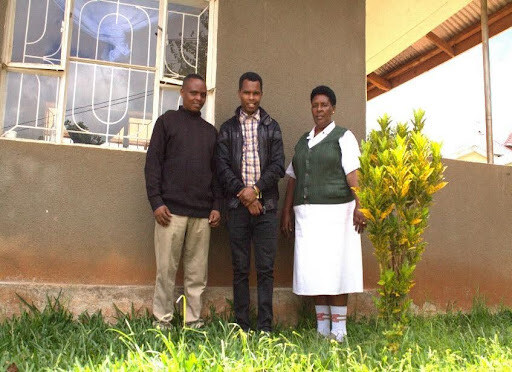
The result is that, after a while, many clients are reluctant to return to a health centre and reach out to CHWs requesting home delivery of ART medication. Responding to this need, CHWs deliver ART medication to their homes.
“Many of them, after missing their medication for a while, are reluctant to return to the health centre and thus reach out to CHWs requesting home delivery of ART medication.” – Thobias Gobre Fissoo
Cleopher Richard, 55, an ART nurse, plays a vital role in promoting clientsʼ adherence to an ART regime. “As an ART nurse, I ensure that ART medication is collected by CHWs for home delivery to clients who cannot reach the health facility”.
Cleopherʼs contribution to adherence is to prepare ARTs for clients. CHWʼs then deliver these medications to clients at their homes. This unified effort helps assist clients in adhering to their medication regimen. Clients receive their medication regularly and timeously to ensure adherence, but more than that they witness genuine support for their adherence and treatment from their health facility. This has great emotional benefits of feelings of value and inclusions.
Wide-Ranging Benefits
Collection of medication is often a financial issue, with PLHIV not being in a position to prioritize the outlay of funds for transport for the clinics. This unique service overcomes a number of socio-economic barriers to adherence. However, it is only truly effective when the medication is fully understood by clients. This is where the B-Ok kit shifts the intervention to one that is more impactful with long lasting positive effect.
“It’s a demonstration of genuine love and care despite CHWs facing challenges such as transportation, especially in remote and mountainous areas where some of our clients reside but CHWs make every effort to reach all clients in a timely manner,” – Cleopher Richard
During test implementation of the B-Ok kits, CHWs utilized the simple, visual explainer tool to approach a group of rural-based clients that had been lost to follow up for a number of months. CHWs were trained by the HCD component of the AYN project to use this innovative tool, given the necessary kits (housed in attractive cloth bags) and mentored and trained in the use of the new tool for it to be most effective. The team targeted a group of rural PLHIV who were not adherent with low literacy levels.
Using simple visual explanation to convey detailed scientific information, the B-Ok kit was highly effective to explain the importance of adherence from a fresh perspective to clients. Because the tool is visual, whatever language the client speaks is irrelevant. This tool is also easily understandable to people with low literacy and education levels. The simplicity of the explanation is inviting and inspires confidence in clients.
The B-Ok Kit
Data clerk officer, Francis Gurti, 36, emphasizes the successful interplay between the unified efforts of the CHWs, HCP and the B-OK kits:
“Community Health Workers did a great job in persuading 10 clients among the 19 clients. Now I wish CHWs to continue to give those lost clients a regular education so that they can return to ART refilling. Currently, at Dareda Hospital we only have 1 client who is considered Lost to Follow-up.”
This significant reflection by Francis speaks to the efficacy of incorporating a novel interpersonal communication tool in follow up for ART adherence. HCPs understand challenges associated with promoting medication adherence. They have unified to develop a workable system to retain as many ART compliant clients as possible. The B-OK Kits are a valuable part of the retention ecosystem.
The B-Ok kit utilizes two different colored beads and three plastic bottles – a low cost, low fidelity but highly effective prototype to visually illustrate the progression to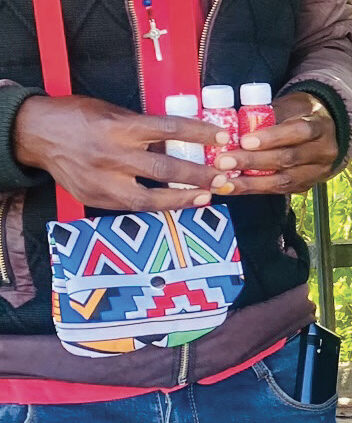 viral suppression. In Tanzania, in-hand tools such as these are not common in the healthcare setting. Both HCP and clients of the healthcare system needed to provide input to adapt the prototype for the needs of the country.
viral suppression. In Tanzania, in-hand tools such as these are not common in the healthcare setting. Both HCP and clients of the healthcare system needed to provide input to adapt the prototype for the needs of the country.
The B-Ok prototype was tested in two workshop settings, containing more than 40 stakeholders and target audience in each – in Dodoma and Manyara.
The Creation Process
This co-created testing process sparked iterations including a change in color of the beads for the Tanzanian context and adaptations of the existing script and animation to fit the culture and epidemiology of the country.
The iteration was field tested through an HCD immersion process with local facilitators testing with HCP to establish their buy-in and motivation levels to use the tool and PLWH to establish their understanding of viral suppression and the science of HIV and ART following a once-off informal interaction with B-OK.
The tool was tested in the kit form and also in an adapted animated video. Both required inputs to localize the innovation and ground its efficacy but both were considered highly desirable and viable by all users.
The USAID Afya Yangu (My Health) Northern Project is designed around client-centered approaches to address gaps in HIV, TB and family planning service delivery, while continuously building and transferring the capacity of local stakeholders for sustainable and country-led ownership. USAID Afya Yangu (My Health) Northern focuses intensely on direct service delivery across all regions in early project years, ensuring that gaps to epidemic control are identified, and tailored solutions are designed to meet the needs of vulnerable populations.
From the American People with support from the U.S. President’s Emergency Plan for AIDS Relief, through USAID.


